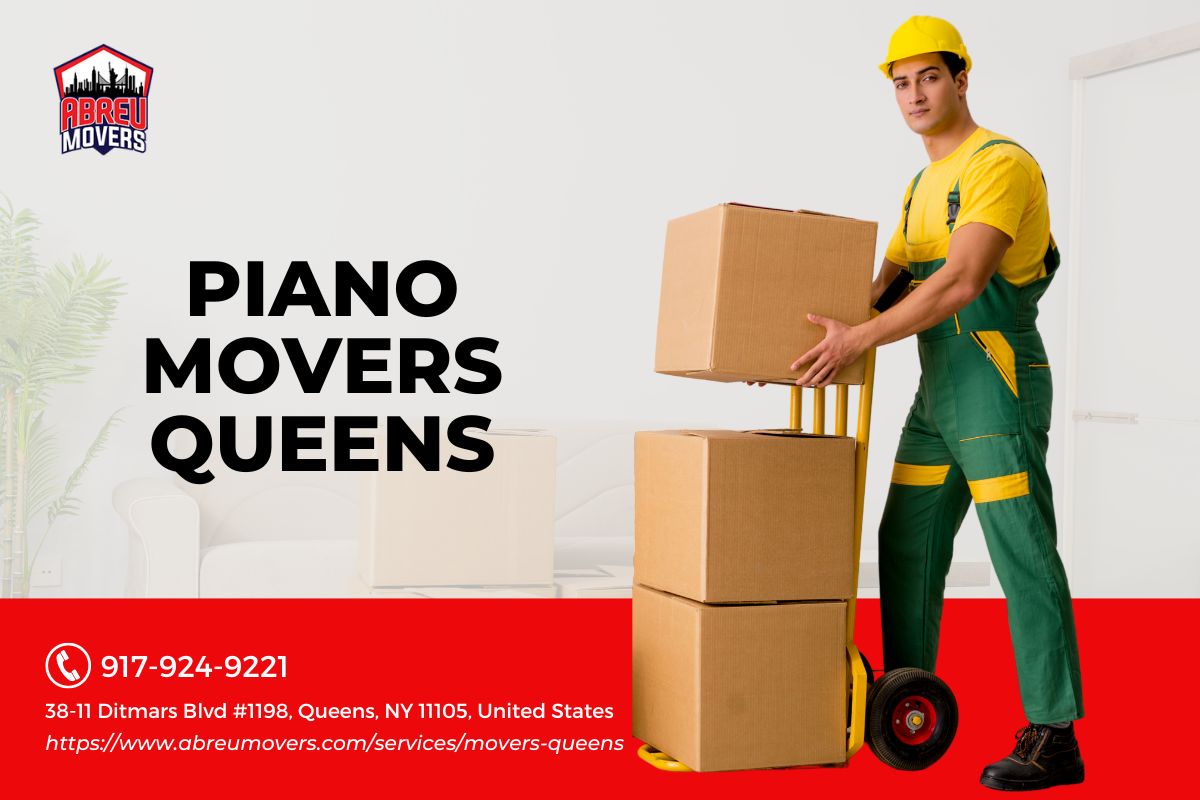


Introduction
Moving can be a stressful and overwhelming experience, especially when it comes to organizing and labeling boxes. However, with the right strategies and techniques, you can make the process much easier and more efficient. In this article, we will provide you with expert tips on how to organize and label your boxes when moving in Queens. Whether you're hiring professional movers or doing it yourself, these guidelines will help ensure a smooth and successful move.
Table of Contents
Why is Organization Important When Moving? Benefits of Properly Labeling Boxes Essential Supplies for Organizing and Labeling Boxes Create a Detailed Inventory Categorize Your Belongings Labeling Techniques for Easy Identification Color-Coding System for Quick Sorting Utilize Technology for Efficient Tracking Pack Strategically for Easy Unpacking Tips for Packing Fragile Items Maximize Space with Smart Packing Methods Don't Forget Essentials Box Label "Open First" Boxes Document Important Information Get Help from Professional Movers Frequently Asked Questions (FAQs) ConclusionWhy is Organization Important When Moving?
When it comes to moving, organization is key to ensuring a smooth and stress-free process. By organizing your belongings and labeling boxes properly, you can:
- Easily locate items when unpacking Keep track of your inventory Minimize the risk of damage to fragile items Save time and effort during the unpacking process
Proper organization will also make it easier for professional movers, if you choose to hire them, to handle your belongings efficiently.
Benefits of Properly Labeling Boxes
Properly labeling your boxes offers several benefits:
Easy Identification: Clearly labeled boxes allow you to quickly identify the contents without having to open each one. Efficient Unpacking: By labeling boxes with specific room names or categories, you can easily prioritize which ones need to be unpacked first. Prevention of Loss or Misplacement: Accurate labeling reduces the chances of items being lost or misplaced during the move. Smooth Transition: Proper labeling ensures that everything ends up in its designated place in your new home, making the transition smoother.Essential Supplies for Organizing and Labeling Boxes
Before you start packing, gather the following supplies:
Sturdy cardboard boxes in various sizes Packing tape Bubble wrap or packing paper Permanent markers Labels or adhesive stickers Packing peanuts or foam inserts (for fragile items) Furniture blankets or moving pads (to protect furniture)Having these supplies readily available will make the packing and labeling process much easier.
Create a Detailed Inventory
Before you start packing, create a detailed inventory of all your belongings. This will help you keep track of what items are packed in which boxes and allow you to easily identify any missing or damaged items during the move.
To create an inventory:
Start with one room at a time. List each item along with a brief description. Assign a number or code to each item. Keep a digital or physical copy of the inventory for reference.Having an inventory will make it easier to update your homeowner's insurance policy and provide documentation for any potential claims.
Categorize Your Belongings
Categorizing your belongings is essential for efficient packing and unpacking. Here are some categories you can use:
By Room: Pack items from the same room together, such as kitchenware, bedroom linens, or bathroom essentials. By Function: Group similar items together, such as electronics, books, or clothing. By Fragility: Separate fragile items from others to ensure proper handling and protection during the move.By categorizing your belongings, you can easily prioritize which boxes need to be unpacked first and ensure that everything ends up in its proper place.
Labeling Techniques for Easy Identification
When it comes to labeling boxes, clarity is key. Follow these techniques for easy identification:
Room Labeling: Clearly label each box with the name of the room where its contents belong (e.g., "Kitchen," "Bedroom"). Content Description: Provide a brief description of the box's contents (e.g., "Pots and Pans," "Winter Clothes"). Directional Arrows: Use arrows on the box to indicate which side should be facing up during transport.Make sure your labels are large, clear, and easy to read from a distance.
Color-Coding System for Quick Sorting
To further streamline the unpacking process, consider implementing a color-coding system. Assign a specific color to each room or category and use colored labels or markers to indicate which boxes belong where.
For example:
- Use blue labels for kitchen-related items. Use green labels for bedroom belongings. Use red labels for fragile items.
This color-coding system will allow you and your movers to quickly identify where each box should be placed in your new home.
Utilize Technology for Efficient Tracking
In today's digital age, technology can greatly assist in the moving process. Consider using inventory management apps or moving-specific apps that allow you to scan barcodes or QR codes on boxes. These apps can help you keep track of your inventory, assign box numbers, and even generate QR code labels for easy identification.
By utilizing technology, you can simplify the tracking and unpacking process, saving time and reducing the http://zionizku768.fotosdefrases.com/moving-and-packing-queens-finding-reliable-storage-solutions chances of misplacing items.
Pack Strategically for Easy Unpacking
When packing, keep the following tips in mind to make the unpacking process easier:
Heavy Items at the Bottom: Place heavier items at the bottom of each box to ensure stability and prevent damage to more delicate belongings. Fill Empty Spaces: Fill any empty spaces in boxes with packing peanuts, foam inserts, or crumpled paper to prevent shifting during transportation. Distribute Weight Evenly: Distribute weight evenly within each box to make it easier to lift and carry. Pack Essentials Last: Pack essential items like toiletries, medication, and a change of clothes separately in an easily accessible box or bag.By packing strategically, you'll save time when unpacking and minimize the risk of damage to your belongings.
Tips for Packing Fragile Items
When it comes to fragile items such as glassware, china, or electronics, extra care must be taken during packing. Here are some tips to ensure their safety:
Wrap Individual Items: Wrap each fragile item in bubble wrap or packing paper before placing them in boxes. Separate with Padding: Use packing peanuts, foam inserts, or crumpled paper to separate fragile items within the box and provide additional cushioning. Label as Fragile: Clearly mark boxes containing fragile items with the word "Fragile" or use special labels designed for this purpose.Taking these precautions will help protect your fragile items during transit and minimize the risk of damage.
Maximize Space with Smart Packing Methods
Efficiently packing your belongings can help maximize space and reduce the number of boxes needed. Here are some smart packing methods to consider:
Utilize Suitcases and Totes: Pack clothing, linens, and other soft items in suitcases or reusable totes to save on box space. Nesting Technique: Nest smaller items inside larger ones to maximize space and protect delicate belongings. Disassemble Furniture: If possible, disassemble furniture such as beds or tables to save on space and make it easier to transport.By packing smartly, you can minimize the number of trips between locations and optimize the use of available space.
Don't Forget Essentials Box
An essentials box is a box that contains all the items you'll need immediately upon arrival at your new home. This box should be easily accessible and packed last.
Items to include in your essentials box:
- Toiletries Medications Change of clothes Basic kitchenware (plates, cups, utensils) Bedding Chargers for electronic devices
Having an essentials box will ensure that you have everything you need without having to dig through multiple boxes on your first day in your new home.
Label "Open First" Boxes
To make the unpacking process even more efficient, designate a few boxes as "Open First." These boxes should contain items you'll need immediately upon arrival, such as bed linens, toiletries, or a coffee maker.
Clearly label these boxes with the phrase "Open First" to ensure they are easily identifiable and unpacked first.
Document Important Information
Before moving, take the time to document important information related to your move. This can include:
- Contact information for your moving company or professional movers Tracking numbers for shipped items Rental agreements or contracts Insurance policies
Having this information readily available will make it easier to address any issues or inquiries that may arise during the moving process.
Get Help from Professional Movers
If you find the moving process overwhelming or simply don't have the time to handle everything on your own, consider hiring professional movers. Professional movers in Queens, such as ABC Movers or XYZ Moving Company, can provide expert packing and moving services tailored to your specific needs.
By entrusting the logistics of your move to professionals, you can focus on other aspects of your transition while ensuring a smooth and efficient relocation.
Frequently Asked Questions (FAQs)
Q: How far in advance should I start organizing and labeling my boxes?- A: It's best to start organizing and labeling your boxes at least a few weeks before your move. This will give you ample time to sort through belongings, gather supplies, and properly label each box.
- A: While reusing old boxes is cost-effective and eco-friendly, make sure they are sturdy enough to withstand the weight of your belongings. Reinforce any weak spots with packing tape to prevent them from breaking during transportation.
- A: Labeling every box individually is highly recommended, as it allows for easy identification and quick sorting. However, you can also group similar items together in larger boxes and label them accordingly.
- A: The decision to hire professional movers or handle the move yourself depends on various factors, including the size of your move, distance, budget, and personal preference. Professional movers can provide a hassle-free experience but come at an additional cost.
- A: To protect your belongings during the move, use proper packing materials such as bubble wrap and packing paper. Secure boxes with packing tape and avoid overpacking to prevent items from shifting during transportation.
- A: For fragile or valuable items, consider using specialty packing materials such as foam inserts or double-walled boxes. Label these boxes as "Fragile" and inform your movers about their presence to ensure they are handled with extra care.
Conclusion
Organizing and labeling boxes when moving in Queens is crucial for a smooth and successful relocation. By following the expert tips provided in this article, you'll be able to efficiently pack your belongings, keep track of inventory, and ensure that everything ends up in its proper place in your new home. Whether you choose to tackle the move yourself or hire professional movers, proper organization and labeling will make the process much easier and less stressful. So start planning early, gather your supplies, and get ready for a seamless moving experience!